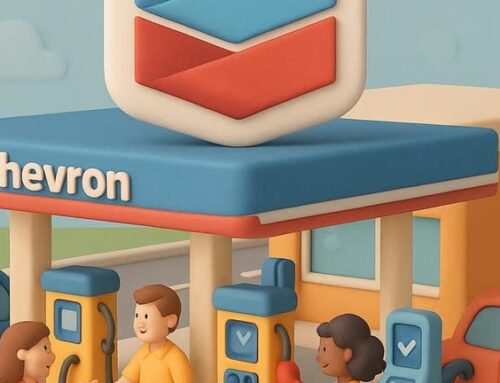Data centers and the balance between economic development, environment
November 12, 2025
NORTH MANKATO — A packed auditorium at the South Central College North Mankato campus gathered Wednesday afternoon for a regional forum on the growing wave of conversations surrounding data center development across Minnesota.
The event, co-hosted by Benya Kraus, president and CEO of Southern Minnesota Initiative Foundation and Sabri Fair, environment and sustainability planner for the Region Nine Planning Commission, brought together legislators, local officials, researchers and utility leaders to discuss how communities can prepare for both the opportunities and the challenges of this fast-expanding industry.
Kraus opened the forum by outlining its purpose — to educate local leaders and residents about data center technologies, the infrastructure demands they bring and how to plan collectively for sustainable growth.
“We’re not holding this event to convince you of one way or another, but to expose intentionally a range of different perspectives,” Kraus said. “Today is the start of the conversation.”
The session was structured around two panels exploring technical foundations, environmental impacts and strategies for community benefit.
Mechanical engineer Thom Jackson defined data centers simply as “a room full of computers” that are essential facilities powering modern digital life — from streaming services and online banking to artificial intelligence. He explained the range of data center types, from small enterprise operations to massive hyperscale campuses, and the resources required to operate them, including large-scale energy and cooling systems.
Economic potential meets environmental concern
In a survey conducted at the beginning of the event, attendees were asked what potential benefits they saw data centers and artificial intelligence bringing to their communities. Responses highlighted employment opportunities, economic advancement and expanded tax revenue as top advantages.
When asked about concerns, however, the responses told another side of the story — water usage, energy demand and environmental impacts topped the list. That tension between growth and sustainability carried throughout the day’s discussions.
“Water in our area is a common-pool resource,” Andi Sutton, executive director of Southeast Regional Sustainable Development Partnerships said of the Zumbro River Watershed serving southeast Minnesota. “Right now, decisions about water use are very siloed. One of the questions that our city administrator leaders are bringing is, ‘how can we make better collective decisions about where and how data centers are sited?'”
Current legal debates were also discussed, including two lawsuits in Minnesota challenging the use of Alternative Urban Areawide Reviews for evaluating large industrial developments — one of them being against the city of North Mankato. Tom Hagen of North Mankato asked panelists how these processes can be more transparent to the public.
“I think the problem here that we’re seeing with data centers in particular, is how large they are. These are hyperscale data centers. When you add in this level of secrecy, that’s where people are struggling,” said Sarah Mooradian, government relations and policy director for CURE, an environmental advocacy group. “There’s an element that we’re seeing where there’s at least the perception of conflict.”
Carrie Jennings, research and policy director for the Freshwater Society, reminded attendees that water management is already a pressing issue. She referenced a 2009 report finding that the Mt. Simon aquifer, southern Minnesota’s primary water resource, was being used faster than it could recharge. Jennings also raised concerns about transparency, describing how some cities under non-disclosure agreements with high water-use companies excluded residents.
“There’s a tension here,” Jennings said. “How can we balance economic development with the need to ensure future water availability for our communities and ecosystems? Stakeholder participation is the piece that’s most often missing, especially in this development process.”
Legislative developments
Minnesota Senator Nick Frentz said Minnesota’s goal of 100% clean energy by 2040 means as data center growth accelerates, they must rely on renewable power.
“We have some of the toughest environmental regulations in the country, and we are proud of that,” Frentz said. “We also have these economic opportunities which are profound. As legislators, we have to balance the budget.”
Minnesota currently has 41 data centers operating across the state and Frentz said electricity demand could double within two decades. New legislation now requires these facilities to report water usage twice a year, with Frentz calling it “landmark legislation.”
“The water in the largest of data centers uses above 100 million gallons a year,” Frentz said. “But we have a long history in Minnesota of protecting water.”
He added that the Department of Natural Resources and the Public Utilities Commission now have stronger roles in permitting, with authority to require aquifer tests and to consider community and environmental impacts before approving projects.
Planning for growth and community benefit
Thomas Lambrecht with Great River Energy, Andy Wilke with Greater Mankato Growth along with Mooradian discussed how cities can navigate confidentiality agreements during early talks with developers, emphasizing that open communication can reduce public distrust and improve collaboration. Sustainable design was identified as essential to minimizing long-term environmental costs.
“We definitely promote and work with all customers to understand sustainability options. Water conservation is one of those things,” Lambrecht said, noting some of the “biggest challenges in data center development” include landowner control, public perception, regulatory issues and political support.
In the first of three forums on the topic, one message was clear — as data centers expand across Minnesota, communities face a pivotal moment to define how this industry will grow, with an emphasis that communities need reliable data, proactive planning and strong local voices in decision-making.
Search
RECENT PRESS RELEASES
Related Post



